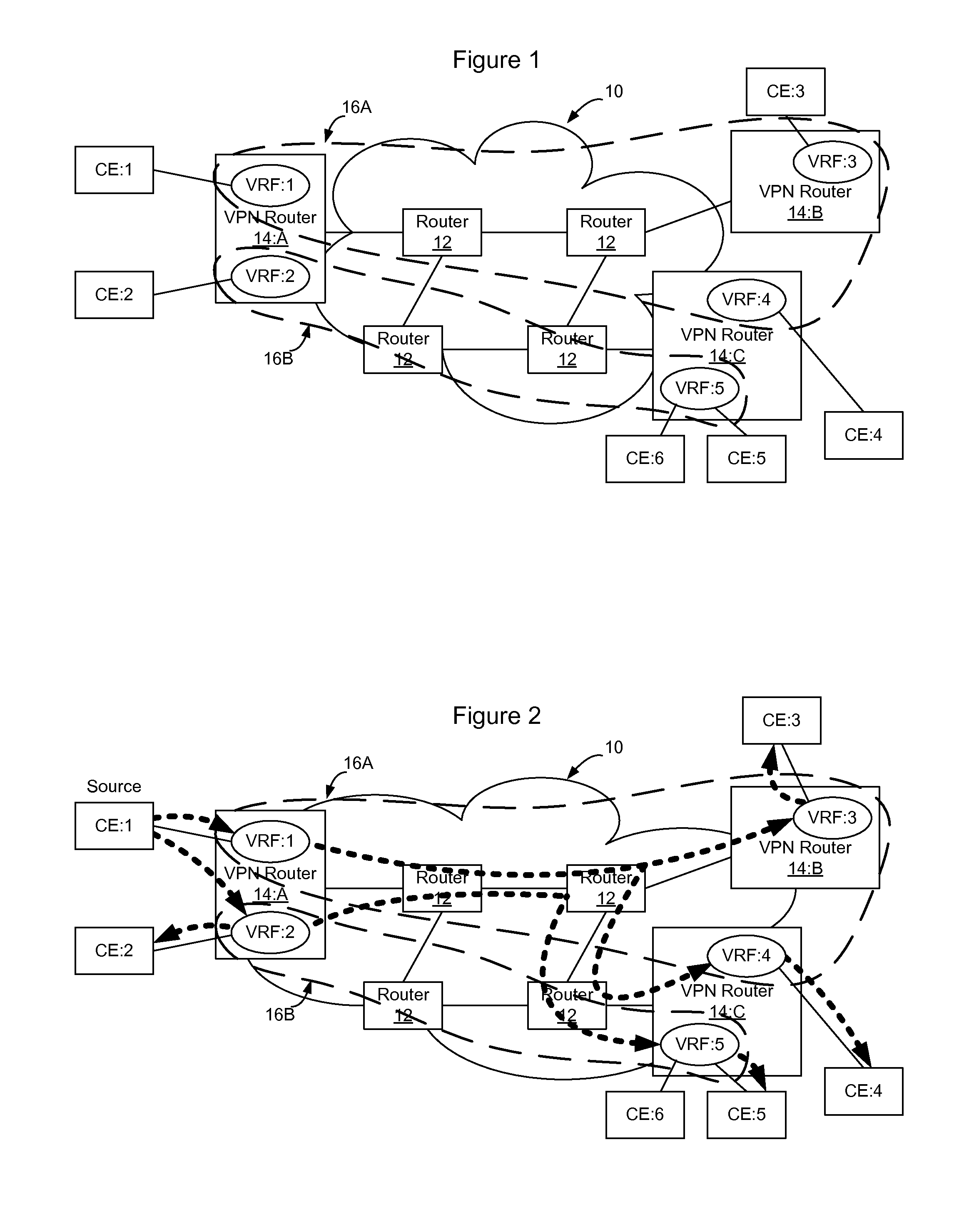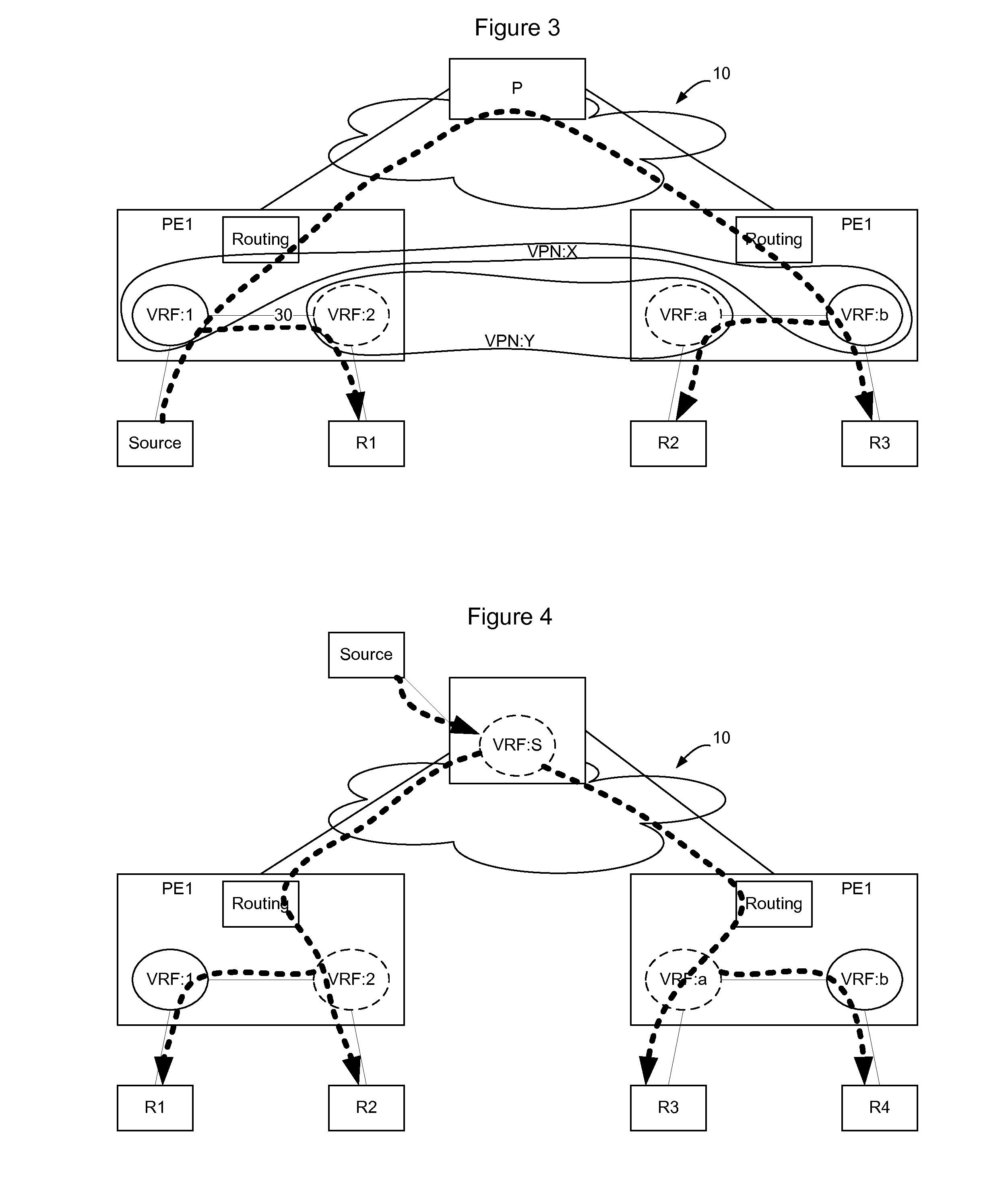Method and Apparatus for Enabling Multicast Route Leaking Between VRFs in Different VPNs
a multicast route and vpn technology, applied in the field of communication networks, can solve the problem that the receivers in separate vpns cannot be part of the same multicast distribution tree branch, and achieve the effect of efficient ip multicast distribution tr
- Summary
- Abstract
- Description
- Claims
- Application Information
AI Technical Summary
Benefits of technology
Problems solved by technology
Method used
Image
Examples
Embodiment Construction
[0020]Enterprise consolidation and security considerations are drivers that demand that networks be virtualized. Virtualization of a network enables a virtual network to be created over the physical network so that traffic may be maintained private to the subset of users and nodes that form part of the virtual network. Layer 2 (i.e. Ethernet Virtual Local Area Network VLAN) and Layer 3 (Internet Protocol) based VPNs are functionalities that support network virtualization. There are many types of VPNs, such as MPLS based VPNs (established using IETF RFC 4364 / 2547), Virtual Private LAN Service (VPLS), Pseudowire, and IP-Security (IP-SEC) based VPNs. Other types of VPNs exist as well and this list is not intended to be exhaustive. Use of VPNs enables traffic to be segregated, so that particular traffic may be provided only to selected receivers that are associated with a particular VPN.
[0021]FIG. 1 shows an example communication network 10. In the communication network 10, routers 12 i...
PUM
 Login to View More
Login to View More Abstract
Description
Claims
Application Information
 Login to View More
Login to View More - R&D
- Intellectual Property
- Life Sciences
- Materials
- Tech Scout
- Unparalleled Data Quality
- Higher Quality Content
- 60% Fewer Hallucinations
Browse by: Latest US Patents, China's latest patents, Technical Efficacy Thesaurus, Application Domain, Technology Topic, Popular Technical Reports.
© 2025 PatSnap. All rights reserved.Legal|Privacy policy|Modern Slavery Act Transparency Statement|Sitemap|About US| Contact US: help@patsnap.com



